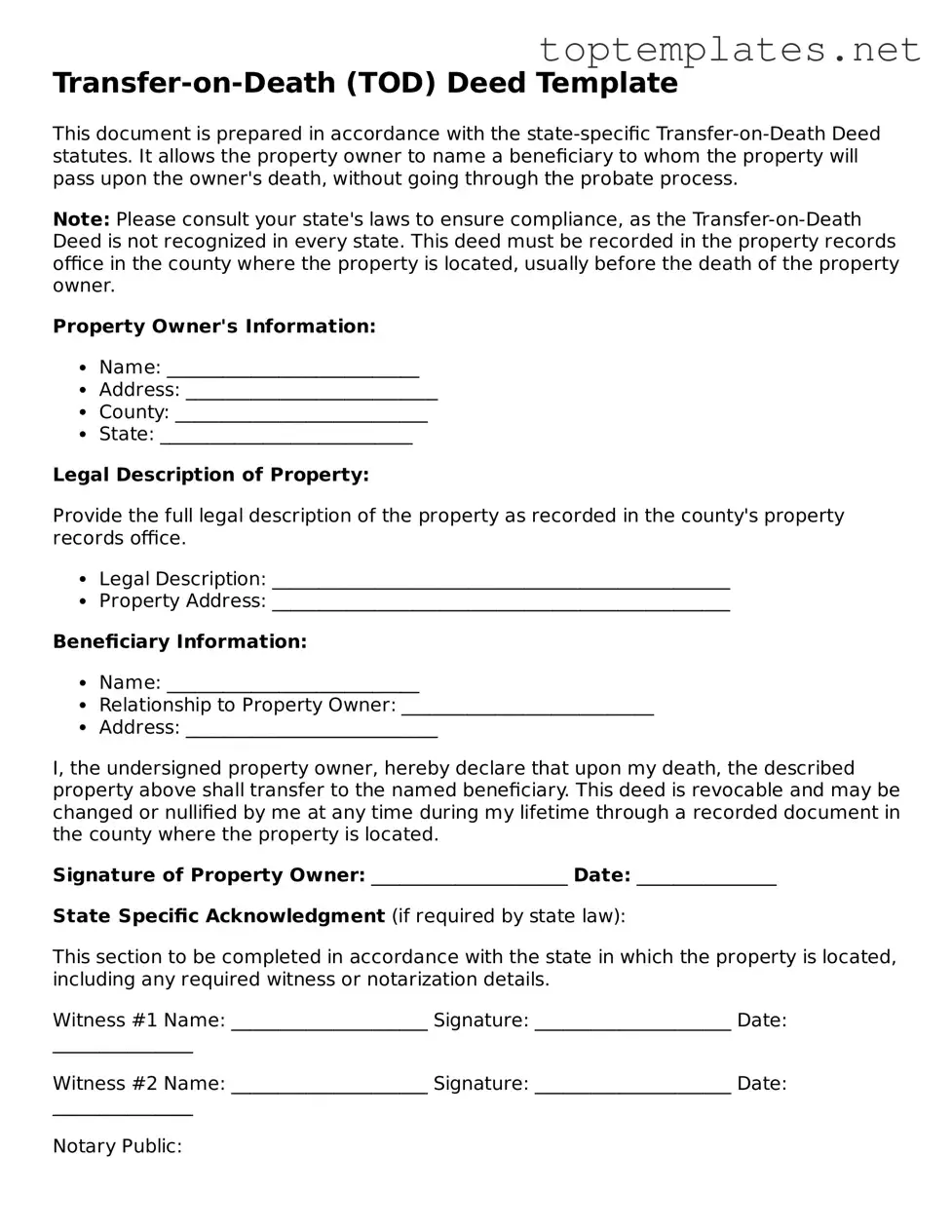Transfer-on-Death (TOD) Deed Template
This document is prepared in accordance with the state-specific Transfer-on-Death Deed statutes. It allows the property owner to name a beneficiary to whom the property will pass upon the owner's death, without going through the probate process.
Note: Please consult your state's laws to ensure compliance, as the Transfer-on-Death Deed is not recognized in every state. This deed must be recorded in the property records office in the county where the property is located, usually before the death of the property owner.
Property Owner's Information:
- Name: ___________________________
- Address: ___________________________
- County: ___________________________
- State: ___________________________
Legal Description of Property:
Provide the full legal description of the property as recorded in the county's property records office.
- Legal Description: _________________________________________________
- Property Address: _________________________________________________
Beneficiary Information:
- Name: ___________________________
- Relationship to Property Owner: ___________________________
- Address: ___________________________
I, the undersigned property owner, hereby declare that upon my death, the described property above shall transfer to the named beneficiary. This deed is revocable and may be changed or nullified by me at any time during my lifetime through a recorded document in the county where the property is located.
Signature of Property Owner: _____________________ Date: _______________
State Specific Acknowledgment (if required by state law):
This section to be completed in accordance with the state in which the property is located, including any required witness or notarization details.
Witness #1 Name: _____________________ Signature: _____________________ Date: _______________
Witness #2 Name: _____________________ Signature: _____________________ Date: _______________
Notary Public:
State of: ___________________
County of: __________________
On this, the _____ day of ___________, 20__, before me, a Notary Public, personally appeared _____________________________, known to me (or satisfactorily proven) to be the person whose name is subscribed to the within instrument and acknowledged that he/she executed the same for the purposes therein contained.
In witness whereof, I hereunto set my hand and official seal.
Notary Signature: _____________________ Notary Seal:
